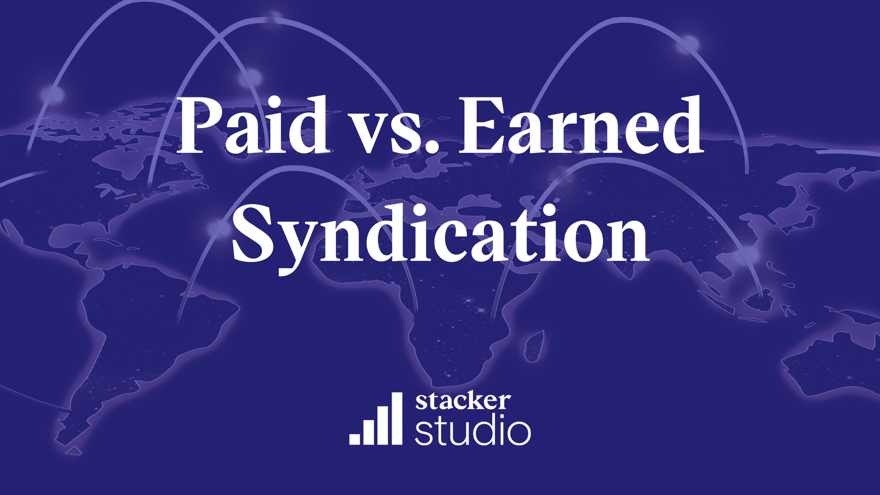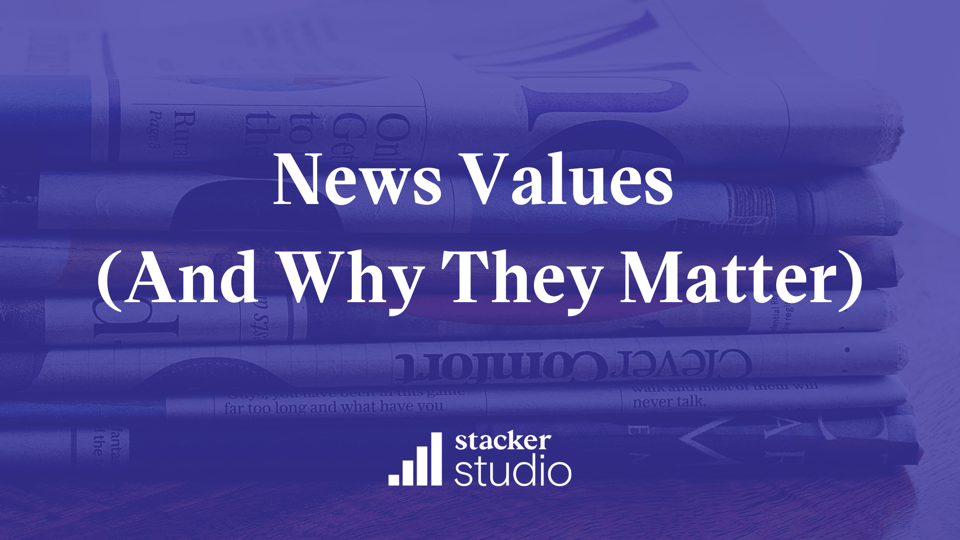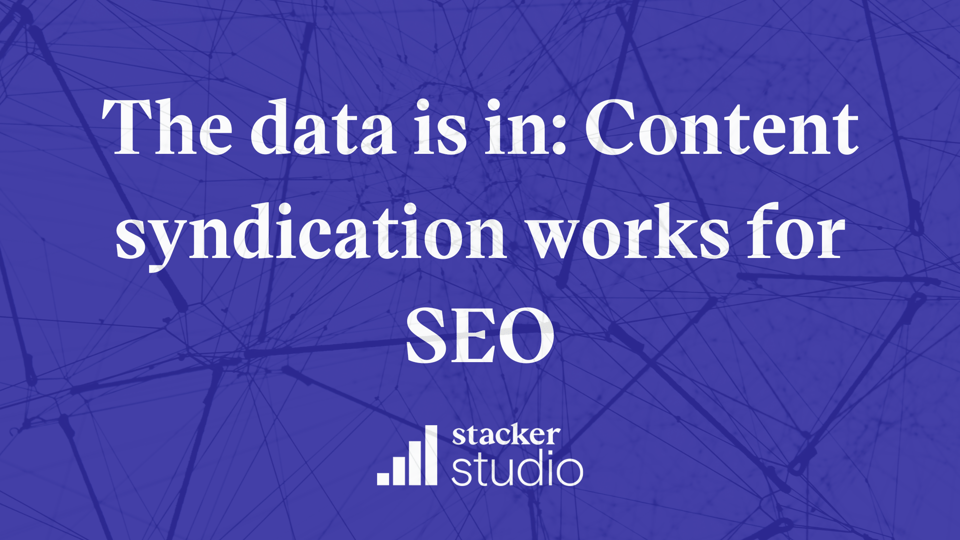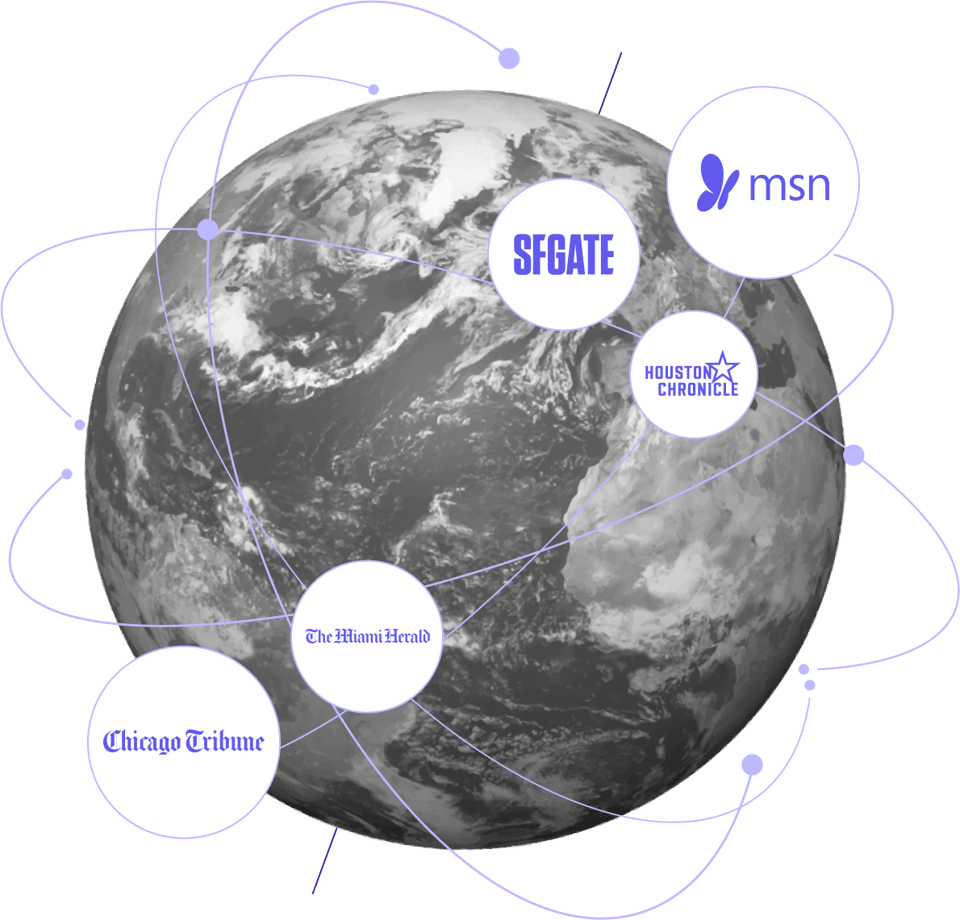To be competitive in an oversaturated market, every website needs engaging content.
However, we all know writing and publishing great content is just the beginning — you still have to reach your audience. There are many ways to increase the visibility of what you write, and content syndication is a common method.
But there are two main types of syndication — paid and earned — and understanding the unique value of each will allow you to plan the best content promotion strategy possible.
In this article, I’ll explain the difference between paid syndication and earned syndication and explore the advantages and disadvantages of each.
What is content syndication?
Content syndication is republishing the exact piece of content (blog post, infographic, expert quotes, videos, or any web-based content) on one or more third-party websites.
You may have written an award-winning piece, but if no one gets to read it, no matter how great it is, then the content is ineffective. Content syndication is a great way of getting your already produced content to a wider and more diverse audience. It‘s an efficient way of expanding audience reach because one piece of content can get to multiple audiences.
Note that it is not the same as guest blogging, which requires you to create an entirely new piece of content according to the host terms and conditions. Content syndication is a more efficient way to expand your content reach because you are recycling or repurposing already-written content, which is less time consuming.
We were inspired by Gini Dietrich’s PESO model to label and define the two types of content syndication: paid and earned. The key differentiators are the quality of the publication, the amount of resources required, and the cost.
Paid content syndication
As the name implies, paid syndication is when you pay a distribution network to syndicate your content to various publishers. Some examples are PR Newswire, Taboola, and Outbrain. With paid syndication, your content is often displayed at the bottom of editorial content via widgets as recommended or related articles.
This is an example of a syndicated article placed on TechRadar by Taboola. TechRadar is a technology website; however, the cost of fuel is a universal subject. By posting on TechRadar, the writer is able to access new audiences.
Taboola and similar sites will syndicate more top-of-the-funnel stories on your behalf, while PR Newswire focuses on press releases and more on-brand content.
This is an example of a product press release distributed through newswire syndication.
Advantages of paid syndication
-
It’s a very quick and easy way to distribute content. It works like most paid advertising platforms, requiring minimal effort as the distributor already has a curated list. You define your audience, budget, etc., and your content is sent out to qualifying media outlets via a feed.
-
Paid syndication is often cheaper than PPC advertising. You can set your budget for as low as $20 and your CPC (cost-per-click) $0.03 and once you hit your budget your campaign will stop running.
Disadvantages of paid syndication
- Although they are a decent way to reach new audiences, paid syndication often carries no SEO value because the content is usually highlighted as paid content or the links made nofollow or tagged as sponsored. This distinction enables Google to identify these as advertising links and stop any authority from passing to the brand’s site.
These are examples of syndicated content tagged as sponsored content.
- Most syndicated content is placed at the bottom of the editorial page below user comments and other related content promoted by the publisher, which means it’s less likely to be seen. According to research by Nielsen Norman Group, only 26% of people scroll to the bottom of the page.
- Even though you can define some targeting, the final list of sites where the content will be featured is often outside your control. If you have a low budget, your content can appear on low quality sites or sites that are totally irrelevant to your market.
Earned content syndication
Earned content syndication often requires pitching your content to targeted relevant publications to earn a feature, mention, or extract. This requires a lot of effort, because it takes time to come up with newsworthy content, collate a list of relevant sites, and outreach to each media outlet individually.
An alternative way to pursue earned syndication is to partner with a company like ours. Stacker is a data journalism newswire that syndicates newsworthy content to some of the most authoritative publishers in the U.S. Stacker Studio is our brand partnership wing, in which we create news stories on behalf of these companies and distribute the content to 3,000+ local and national news partners. We’re able to guarantee high-quality media pickups to our brand partners because we’ve built strong relationships with authoritative publishers across the country.
Take our brand partner, Sunday Citizen, for example. In less than a year, we were able to use earned syndication to garner more than 1,600 media pickups and prompt a 5,000% increase in their organic traffic.
Advantages of earned content syndication
- The ability to only target relevant authoritative sites is one of the largest advantages of earned syndication. You can target sites that have more authority than yours and earn highly valuable links and canonicals as a result. This is possible because you’re creating content that’s quality enough to merit being republished without payment.
- The SEO benefits are significant. When a publication chooses to republish your content rather than being paid for it, it sends a powerful authoritative signal both to readers and to Google. By being credited as the source of the content (either through a backlink, canonical tag, or both), Google’s algorithm picks up on how you’re trusted by an authoritative publisher, which improves your own brand’s credibility.
- Due to the relationships earned syndicators have built with journalists, there is the added advantage of being able to plan. Example, at Stacker Studio, because of our carefully cultivated relationships with national and local newswires, we know what content is currently on the news cycle, and because we have in-depth knowledge of our clients’ contents, we can pitch related features quickly.
Disadvantages of earned content syndication
- Earned syndication is highly targeted and therefore requires a lot of effort if done manually. Finding authoritative publications that are relevant to your target audience who are also willing to republish your content takes time.
All types of content syndication can be efficient ways to expand your audience; however, some methods definitely have a higher impact than others. Consider your goals for the particular piece of content you plan to syndicate and assess which syndication strategy (or strategies) is the most appropriate.





.jpg?width=1657&height=1000&name=Nav-Our%20Results(1).jpg)





